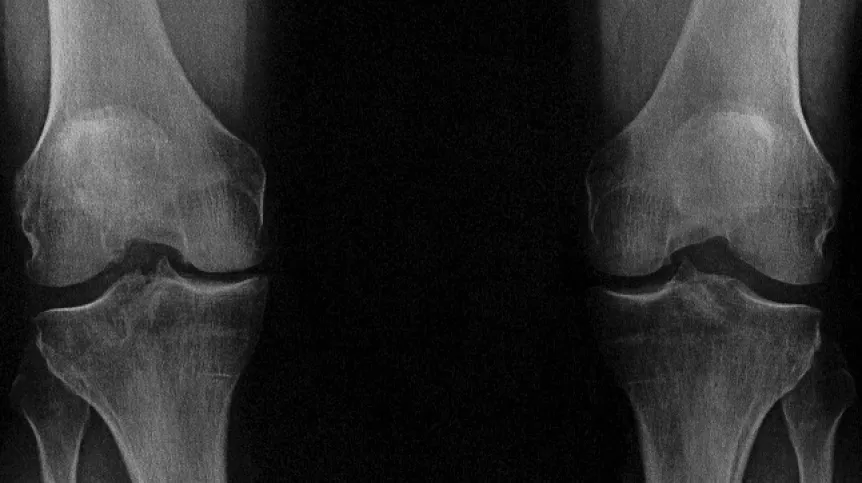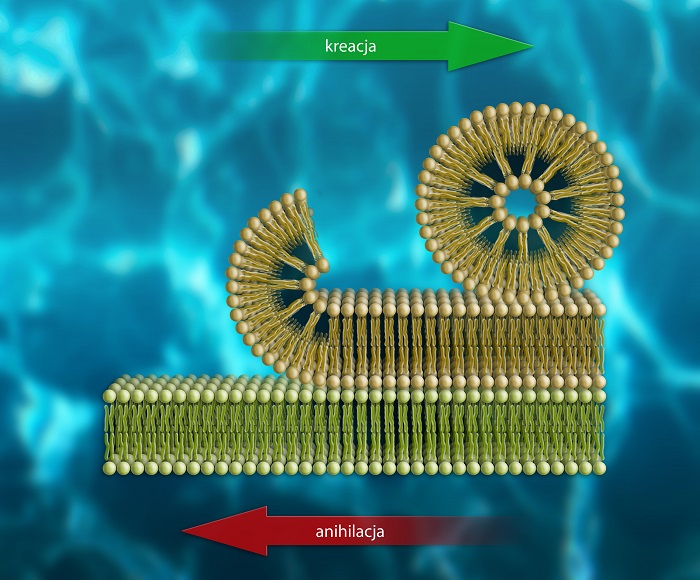
When we move, our knees actually...roll. This conclusion is a result of an innovative friction model presented by scientists from the Bydgoszcz University of Science and Technology.
According to the researchers the model can help in creating therapies against the decline in the efficiency of the human musculoskeletal system. If the conclusions from the model can be transferred to the world of mechanical devices, then at least in some cases sliding friction can be transformed into rolling friction. In addition to energy benefits, this should increase the durability of interacting structural elements.
Professor Adam Gadomski, one of the authors of the paper published in the Journal of Physics D: Applied Physics, said: “The hypothesis of the existence of mesoscale rolling friction in our joints, at the level of micellar structures, was first presented 15 years ago.
“Now we have managed to transform it into a model that takes into account the most important physical and chemical processes that take place in the synovial fluid filling the joint cavities and on the surfaces of both cartilages.”
HUMAN JOINTS LIKE MACHINE BEARINGS
The researcher explained that the synovial fluid acts as a thin layer of lubricant. It separates the rubbing parts of the bones covered with cartilage within the joints. The fluid consists mainly of water with small amounts of biopolymers (mainly hyaluronic acid), phospholipids and proteins. These components are critically important and interact with each other in a complex way that is still not fully understood by scientists.
Co-author of the article Dr. Piotr Bełdowski explained that complex processes are responsible for the mechanical operation of joints.
He said: “As a result of the applied external pressure, the hydrogen bonds in the water molecules are broken. Cascades are formed in the synovial fluid, through which hydronium ions begin to flow. In such conditions, the fibres of the polymer network of hyaluronic acid, covering the cartilage surfaces, gain a negative electric charge and begin to electrostatically repel each other. This helps to reduce friction.”
MICELES CONVERT SLIDING FRICTION INTO ROLLING FRICTION
He added that at slightly larger distance scales, phenomena occur that are related to the formation and disappearance of micelles - circular structures consisting of a phospholipid layer on the outside and containing water on the inside.
Phospholipids are arranged in multilayers on cartilage surfaces. When shear forces and associated sliding friction occur in the system, the outer layers of these multilayers begin to peel off. At the same time, they try to achieve a spatial configuration that guarantees the smallest possible area. Then, micelles are formed. They act like rollers or balls in a bearing between the cartilages.

Dr. Eng. Beldowski said: “Micelles are responsible for converting sliding friction to rolling friction. When the external forces are removed, micelles degrade and the phospholipids that form them redeposit on the cartilage surfaces, restoring the original multilayer state. So the joint works like a mechanical system with rolling bearings, only an unusual one because they appear only when they are really needed.”
PUSHING A CAR WITH THE HANDBRAKE ON
To explain the benefit of converting sliding friction into rolling friction, the scientist gave a car analogy. He said: "While pushing a car is no fun, it is possible if all the wheels are free to turn, that is, if they are rolling on the ground. But when we apply the handbrake and lock the wheels, the car will not move. This is because there will now be significantly more sliding friction between the tires and the ground, instead of rolling friction.”
Professor Adam Gadomski said: “In medicine, one of the applications of our model may be new, more rational types of viscosupplementation. This term includes injections used to supplement the composition of synovial fluids in articular cartilages in order to restore optimal proportions between the components responsible for reducing friction during joint work. Arthroscopic procedures could also be improved.”
The engineers point out that the direct use of the model in their own field (engineering) does not seem possible at present due to the specificity of the biological environment of the joints. There are high concentrations of water within the friction system, and the key ingredient of the synovial fluid, hyaluronic acid, is replaced in the joints almost daily.
The researchers from Bydgoszcz emphasize, however, that in the future their model may help to find analogues of substances responsible for the biological mechanism of rolling friction. The properties of these equivalents of natural substances will be better suited to the operational requirements of modern mechanical devices. They considered research on the intelligent restructuring of engine oils to be promising.
PAP - Science in Poland
kol/ zan/ kap/
tr. RL













